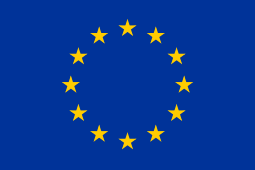Rita and banal gender-bending
The nature of a sequence #2
By Kim Toft Hansen, 28 May 2024
“Rita is just a banger. […] I really hope that there is no one in here who hasn’t watched Rita. That series is just fantastic.”
Anonymised respondent in Danish focus group interview
Rita (TV 2, 2012-20) is a Danish television series that has aged well since its premiere in 2012 on Danish television. It started as a Danish commercial public service series for the first two seasons, but after TV 2 chose to terminate the series, Netflix partnered up with the popular Danish broadcaster for the latter three seasons. Rita was the first local Danish Netflix co-production, successfully establishing a co-production relationship between partners that creatively refers to each other as ‘frenemies’. The complete series is internationally available through Netflix and the Danish streaming service TV 2 Play.
Maybe the local Netflix distribution of the series explains its continued presence among Danish young adults. GEMINI conducted five focus group interviews with Danish high school students, and Rita came up unprompted in four of these. Most of the interviewees have watched Rita and many really enjoys the show. Since the series spontaneously came up through our interviews, Danish GEMINI scholars chose to use Rita as a central case study. This brief blog entry introduces to Rita as a series and as an exemplary learning tool in high school teaching of gender diversity and complex characters.
Masculine/Feminine
For teaching purposes, GEMINI uses a one series, one scene, one issue dogma to create easy-to-use material that may facilitate a discussion about gender issues through one scene from one specific series. In this case, we have chosen a central scene from the opening episode in the first season, since this scene not only introduces the controversial main character, but it also integrates her contentious traits in an open discussion of her son’s homosexuality. Essentially, this introduces what we would term banal gender-bending through a character with mixed traditional gender traits, but it may also breach with the one issue dogma, since it involves an opportunity to discuss the sexuality of another character too. However, the two topics are in the scene closely knitted together through the actions of Rita.
According to Christian Thorpe, the creator of Rita, this specific scene was controversial for the broadcaster:
“Of course, we had some discussions [with the broadcaster] on how far she can go. Definitely, a scene like the one where they have dinner in the garden and she says “hey, you’re teasing your gay brother” that was a big discussion. They felt that she went too far in that scene. And we felt that, as long as she says I’m sorry afterwards, we understand that it doesn’t come from a bad place.”
Christian Thorpe (Série Series 2013
On the surface, the scene was controversial because it mocks Jeppe’s gay sexuality, but Thorpe underlined that it should be read conversely, since “no one has the faintest problem with Jeppe being gay, except himself” (Daimer & Blegvad 2012). Tightly constructed, the scene communicates Rita’s use of cigarettes and alcohol, her ability to expose other people’s double standards through witty one-liners, and her light-hearted approach to sexual relationships, while it introduces Jeppe’s coming-out as something internally rather than culturally difficult.
Rather than being what Brett Martin (2013) has referred to as a ‘difficult man’ (hardboiled male characters with softer sensibilities), Rita is exposed as a ‘difficult woman’ with an explicitly cis-gendered sexual orientation and traditionally attractive female features in combination with stereotypical male traits. The series’ gender portrayal may be used for a constructive dialogue about masculinity/femininity labels, while Jeppe’s coming-out narrative and romantic storyline highlights a naturalised acceptance of homosexuality without the need for external character traits indicating his sexual orientation. Essentially, Jeppe’s character presents an unforced narrative about being gay and presents homosexuality in a naturalised, accepted context.

Pedagogical use of Rita in high school teaching
The scene from Rita described above may be especially suitable for pedagogical purposes, since it confronts difficult issues with a sense of humour and a positive approach to conflict. The scene integrates complex notions of gender traits and sexual identity not by confronting relations of power, but rather by narrating a cosy-friendly environment where personal identities may be enjoyed without controlling environments.
Following the pedagogical triangle for teaching gender issues in series, the high school teacher may motivate students’ comprehension of the narrative with attention towards negotiating gender traits through especially the protagonist Rita. Being a teacher herself, the environment around Rita presents opportunities – through many different scenes – to handle various socio-political issues, while the way she manages problems displays her difficulties with leadership (both male and female).

Firstly, the sequence provides an opportunity to address gender issues from what many high school students in the Danish focus group interviews regard as unforced, naturalised narratives about gender. In this way, Rita runs parallel with our Euphoria example that presents a different opportunity to teach gender issues through series. The unforced nature of gender issues is closely tied to the series generic quality as a character-based dramady. This presents an occasion for teachers and students to discuss how some of Rita’s character traits may be associated with traditional male roles (strong character with agency, chain-smoking, heavy drinking, witty and wisecracking humour, casual sexuality) that we often find in hardboiled detective fiction. At the same time, Rita is an attractive woman with a caring relationship with her children, soft pedagogical teaching skills, and a cis-gendered and straight sexual orientation towards men, traits traditionally associated with women. In this way, the Rita character fits well into contemporary trends towards complex characters in serial fiction.
Secondly, this ties directly into the media literacy perspective that may taught from the Rita case. While Rita is a likable character, she too has a number of flaws and politically incorrect traits. The series was criticised by the Danish Cancer Society for its explicit presentation of smoking, while her sense of humour may stretch the boundaries of what can be said. In the chosen scene, however, one of the characters says “Cheers. Drink up or be gay”, which is an old, controversial and stereotypical Danish expressions that is rarely used today. While the line comes from another character than Rita, it is possible to lift out this line from the scene, and debate what such an expression means, discuss its cultural context, and negotiate why such an idiom appears much more provocative today than only a decade ago. In this way, Rita presents opportunities to teach how characters and character relations are built into complex serial dramas, and how the series’ school context presents an obvious opening for discussions of many different sociocultural contexts, including gender issues.
Thirdly, the series’ gender negotiation could be termed banal gender bending, since it does not maintain the theatrical and obvious display of different blended gender traits (e.g. like the artist Boy George); rather, it takes traditional male and female gender traits and flips and negotiates them through Rita’s character. In this way, gender bending becomes banal (in a similar manner as Michael Billig (1995) refers to banal nationalism), which is less activistic from a gender-political perspective, but it presents a clear communication of mixed gender traits, negotiating stereotypes through humour, social criticism, and breaks with traditional female and male character traits. The marketing material used to promote the series, sometimes presented as tiles through streaming services, includes a dinner table symbolically resembling Da Vinci’s “The Last Supper” (image 2), once again placing the female Rita in a male religious role surrounded by her ‘disciples’, i.e. other characters from the series.

Much may be debated and said from a four-minute sequence from the first episode of Rita, which makes the scene work very well in a teaching context. Not only does it present Rita as a character to root for with specific character flaws; it also highlights several opportunities to integrate gender issues in a classroom discussion about naturalised sexuality and gender-mixed character traits. Such complexities may well be unpacked in an open classroom dialogue with high school students. The Rita sequence provides ample opportunities to teach gender issues and complex character comprehension.
Parts of the above text has also been presented in the GEMINI report “Understanding young adults and gender equality through serial drama” (D3.1). The report will be available through the GEMINI website very soon.
Watch the full sequence from Rita through the GEMINI Facebook page.
Literature
Billig, Michael. 1995. Banal Nationalism. London: SAGE.
Daimer, Amira Høg og Ole Blegvad. “Manuskriptforfatter: Homoer skal ud af offerrollen”. DR, October 19, 2012. https://www.dr.dk/nyheder/kultur/manuskriptforfatter-homoer-skal-ud-af-offerrollen.
Martin, Brett: Difficult Men – from The Sopranos and The Wire to Mad Men and Breaking Bad. Penguin Press (2013).
Série Series. 2013. “Rita / Case Study / Série Series 2013”. Série Series. February 26, 2019. YouTube Video, 46:03. https://www.youtube.com/watch?v=Be0RtfMQ7b8.



